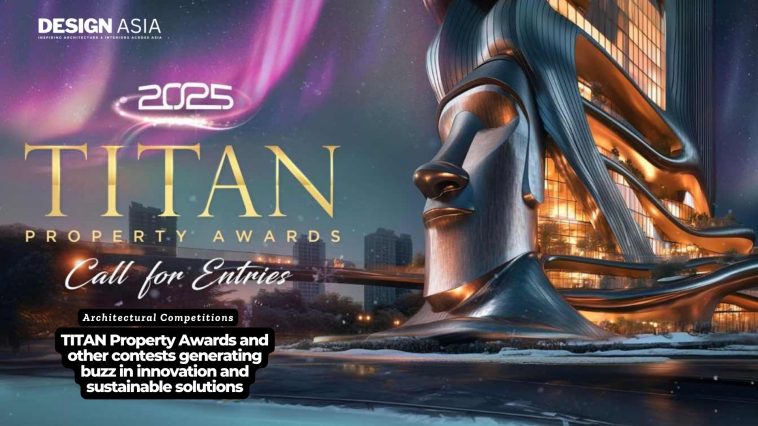Architectural competitions are amplifying innovation and sustainability by rewarding projects that blend design excellence with practical, future-ready impact across development, architecture, interiors, and landscape design. With recent themes emphasizing transformative, human-centered solutions, these programs are accelerating ideas from net-zero buildings and adaptive reuse to low-carbon materials and resilient urbanism.
Why competitions matter
Competitions push teams beyond conventional boundaries, creating an incubator for new materials, technologies, and typologies that later migrate into mainstream practice and policy. Interdisciplinary briefs and juries encourage architects, engineers, planners, and landscape designers to co-develop integrated answers to complex urban and climate challenges, improving the odds that winning concepts are buildable and scalable. As sustainability becomes a core criterion, competitions actively accelerate energy efficiency, circularity, and environmental stewardship across the built environment.
TITAN Property Awards at a glance
- Scope and focus: An international platform honoring excellence in property development, architecture, interiors, landscape, lighting, conceptual design, real estate, and property marketing, with emphasis on ergonomics, innovation, living standards, originality, and sustainability.
- Current theme signals: “Innovative TITAN of Design” celebrates work that blends beauty, function, and transformative impact across sustainable developments and community-elevating spaces.
- Who can enter: Open internationally to developers, architects, interior and landscape designers, real estate professionals, marketers, agencies, public and private bodies, and individual service providers, with built work typically from recent years.
- Recognition levels: Multi-tiered recognition—including category-topping honors and tiered awards—positions practices for global visibility and client trust.
Momentum and market signal
Participation has surged, with a broad mix of studios, developers, and integrated teams from dozens of countries submitting projects that combine innovation with measurable performance and narrative clarity. Specialized architecture design categories highlight contemporary excellence irrespective of budget or scale, widening the platform for both emerging and established studios. Listings across competition hubs and design media amplify credibility, driving buzz, discovery, and sector benchmarks.
Sustainability as baseline
Across categories, sustainability sits alongside user-centric metrics as a baseline requirement, encouraging lifecycle thinking, energy optimization, low-carbon material strategies, water stewardship, and context-sensitive urban integration. Seasonal themes and judging rubrics further invite projects that set new benchmarks in environmental performance while advancing comfort, inclusivity, and community value.
Entry cadence, costs, and access
- Format and venue: Global, online entry and adjudication improve accessibility, documentation quality, and jury reach.
- Windows and fees: Tiered early-to-final deadlines and fee bands across development, design/real estate, and marketing categories improve predictability and participation.
- Proof and timing: Built entries typically must reflect original publication/production without modification for the jury, preserving integrity and comparability.
How to craft a winning submission
- Demonstrate purpose: Tie concept to measurable user outcomes—ergonomics, health, inclusion, community benefit—and include post-occupancy findings where available.
- Evidence sustainability: Provide quantitative energy and carbon metrics, material provenance, circular strategies, resilience analyses, and long-term performance indicators.
- Visual clarity and proof: Submit concise, high-fidelity visuals; clear drawings and photography; and transparent performance data that align with category criteria and jury expectations.
Other competitions shaping the agenda
Beyond TITAN, a wide ecosystem of design, urbanism, and property-sector awards—including international design awards, urban innovation challenges, and sustainability-focused competitions—reinforces the same arc: credible frameworks, rigorous evaluation, and strong dissemination. This network creates a flywheel for uptake, translating competition ideas into buildable projects, municipal playbooks, and developer standards. Cross-program visibility also boosts peer learning and elevates repeatable, scalable solutions.
Takeaways for studios and developers
- Align to impact: Center user experience and environmental performance; quantify benefits alongside design narrative to resonate with contemporary themes and juries.
- Think ecosystem: Pair spatial innovation with communications and market storytelling—programs increasingly recognize the full property value chain from concept to adoption.
- Use momentum: Awards can unlock credibility, clients, partnerships, and media coverage; consistent placements build a durable reputation for innovation and delivery.
Competitions like the TITAN Property Awards are driving a virtuous cycle where design innovation, sustainability metrics, and market recognition reinforce one another—accelerating best practices from visionary concepts into widely adopted standards across global property and city-making.


